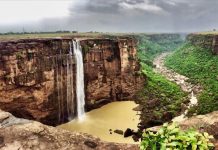15 Nostalgic Photographs of Alappuzha taken in 1980 by Tadeusz stabczynski
Alappuzha also known by its former name Alleppey, is the administrative headquarters of Alappuzha District of Kerala state of southern India. Alappuzha is a city and a municipality in Kerala with an urban population of 174,164 and third among the districts having highest literacy rate in Kerala. In 2016, Centre for Science and Environment rated Alappuzha as the top cleanest town in India followed by Mysuru & Panaji. Alappuzha is considered to be the oldest planned city in this region and the lighthouse built on the coast of the city is the first of its kind along the Laccadive Sea coast.
The city is situated at a distance 28 km from Changanacherry, 46 km from Kottayam and 53 from Kochi and 155 kilometres (96 mi) north of Trivandrum. A town with picturesque canals, backwaters, beaches, and lagoons, it was described as the one of the places known as the “Venice of the East” by Lord Curzon. Hence, it is known as the “Venetian Capital” of Kerala. Malayalam is the most spoken language.
15 Nostalgic Photographs of Alappuzha taken in 1980 by Tadeusz stabczynski.















Thanks to Mr. Ranjith T Mana for sharing these captures in facebook.
It is an important tourist destination in India. The Backwaters of Alappuzha are the most popular tourist attraction in Kerala. A houseboat cruise in these backwaters can be booked. It connects Kumarakom and Cochin to the North and Quilon to the South.
it is the access point for the annual Nehru Trophy Boat Race, held on the Punnamada Lake, near Alappuzha, on the second Saturday of August every year. This is the most competitive and popular of the boat races in India. The mullackal chirap is also one of the attractions of Allapuzha which is the festive season held for ten days every year in December.
Other attractions in Alappuzha are Alappuzha Beach, offering a views of the Laccadive Sea, Pathiramanal , Ambalappuzha Sri Krishna Temple, St. Andrew’s Basilica, Arthunkal, Mannarasala Temple, Chettikulangara Devi Temple, Haripad Sree Subrahmanya Swamy temple, Krishnapuram Palace, Thakazhy Sree Dharma Sastha Temple, Mullakkal Temple, Padanilam Parabrahma Temple, Edathua Church, Alappuzha CSI Christ Church (oldest Anglican church in Central Kerala) and Champakulam Valia Palli.
Alappuzha is home to the Punnapra-Vayalar uprising against the British and also the revolt against the Feudal raj. Communist Party members were killed by the army of the diwan, 200 people at Punnapra on 24 October and more than 150 at Vayalar on 27 October. The total loss of life is allegedly estimated to be more than a thousand.[7] Coir is the most important commodity manufactured in Alappuzha.[8] The Coir Board was established by the Central Government under the provisions of the Coir Industry Act, 1955. A Central Coir Research Institute is located at Kalavoor.
Alappuzha is located at WikiMiniAtlas9.54°N 76.40°E.[18] The average elevation is 1 metre (3.3 ft) Alappuzha covers an area of 1,414 square kilometres (546 sq mi) and is flanked by 2,195 square kilometres (847 sq mi) of Vembanad Lake, where six major rivers spread out before joining the 80 km coast line of the district. The city of Alappuzha is crisscrossed by a system of canals, which is a part of the National Waterway 3 (India).
The district is a sandy strip of land intercepted by lagoons, rivers and canals. There are no mountains or hills in the district except some scattered hillocks lying between Bharanikkavu and Chengannur blocks in the eastern portion of the district. There are no forest area in this district.
Alappuzha is gifted with great natural beauty with the Laccadive Sea on its west. The town has a network of lakes, lagoons and fresh water rivers. The richness of the coastal Alappuzha waters is expressed annually in the blooming and consequent deposit of a huge quantity of fishes and prawns on the Alappuzha coast called ‘Chakara’. This annual shifting of sandbank appears during the post-monsoon period and contributes to the local economy and is a festive season for the people of Kerala. The annual floods rejuvenate and cleanse the soil and water due to which there is abundance of marine life like prawns, lobsters, fishes, turtles, and other flora in the sea.
The backwaters and wetlands host thousands of migrant common teal, ducks and cormorants every year who reach here from long distances. A major feature of the area is the region called Kuttanad, the ‘granary of Kerala’. Kuttanad is also known as the rice bowl of Kerala and is one of the few places in the world where farming is done below sea level. The paddy fields lie about 0.6 to 2 m below mean sea level.



















